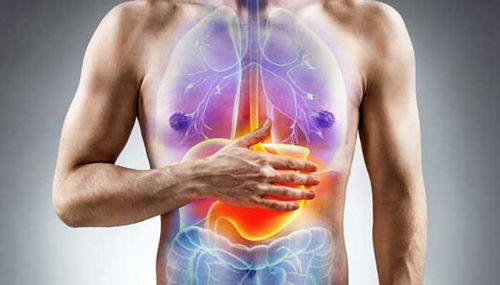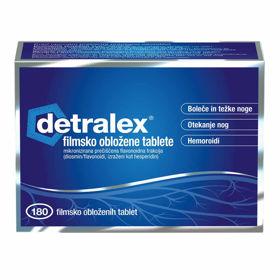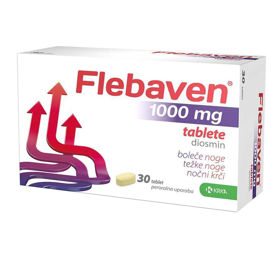A swollen or swollen leg is often the result of injury, infection, heart or kidney disease, thrombosis, or lymphedema. Treatment for a swollen leg includes taking medication, using compression stockings or bandages, resting, and elevating the leg above the level of the heart muscle to reduce swelling. In some cases, surgical intervention is necessary.
Swollen leg: Causes | Chronic venous insufficiency | Peripheral Arterial Disease | Deep vein thrombosis | Phlebitis | Complications | Questions and Answers | Sources/references
There are many different causes of leg swelling. However, a prevalent cause of leg swelling is venous insufficiency or varicose veins. Some people develop varicose veins for this reason.
The contraction of the muscles in the lower legs acts as a pump to help the veins (reservoirs of blood) return to the heart. The tiny valves, or venous valves, in the veins open as blood, flows towards the heart, and then close to prevent the backflow of blood. Back to the legs
Usually, one-way valves (venous valves) in the veins of the legs keep the blood moving up toward the heart. If the valves do not work correctly, they allow blood to flow back through the vein in the opposite direction. Malfunction of the veins often causes swelling of the legs. This type of swelling or edema of the legs, known as venous edema, is caused by the accumulation of blood in the damaged veins and interstitial fluid in the surrounding tissue.
Common causes of swollen feet and ankles
The medical term for swelling is edema. For example, suppose the lower part of the leg, including the ankles or feet, swells. In that case, this condition is known as peripheral edema because it occurs in the periphery of your body, specifically in the extremities. When you first notice that your legs or feet are swollen, mentally review your activities over the past few days.
Here are some common causes of swollen feet in everyday life:
-
Long-term status in one place
-
Prolonged sitting
Video content: what causes leg swelling?

-
A long journey by plane, bus, or another type of vehicle
-
Sprained ankle
-
Leg or foot injury
-
Cuts and wounds on the skin or toenails
-
Cold or flu
-
Use of certain prescription drugs
Swelling may or may not occur with pain or stiffness, and you may not even remember when it started. Some people do not notice any symptoms other than the swelling itself, so without a doctor's diagnosis, it is difficult to determine whether the cause is serious.
Chronic venous insufficiency
Valves in the veins of the legs ensure the flow of blood and fluids throughout the body. If they do not work correctly, ankles and feet or entire limbs can swell. This condition, called chronic venous insufficiency, is severe and is a significant cause of stroke.
Video content: What is chronic venous insufficiency?

Treatment depends on many factors; preventive action can be immediate, i.e., limiting the excessive condition on the legs and visiting a doctor or a specialist who checks your health condition and history (medical record).
Factors that the doctor will consider are:
-
your particular symptoms
-
your age
-
the severity of the current situation
-
the fact of how well you tolerate medications or procedures
The most common treatment for venous insufficiency is compression stockings. These unique graduated elastic socks put pressure on the ankle and lower leg. Compression stockings effectively help improve blood flow and can reduce leg swelling.
Compression socks are available in different strengths and lengths, and the selection depends on your weight and height. Your doctor or pharmacist will help you with advice on which type of compression stockings is best for your condition.
Perifern arterial disease
Peripheral arterial disease (PAD), also known as a peripheral vascular disease (PVD), causes restrictions in blood flow. Therefore, early detection of this disease is crucial to prevent this condition from becoming life-threatening.
Video content: what is peripheral arterial disease?

Peripheral artery disease (PAD) is a disease in which there are problems with blood flow from the heart to the extremities due to narrowing or blockage of the arteries that carry blood to the extremities. This can cause restricted blood flow to the extremities, leading to leg pain, swelling, and muscle weakness.
Usually, the condition is caused by a build-up of fatty deposits in the artery walls. Fat deposits are made up of cholesterol and other waste products. The accumulation of fatty plaques on the walls of the arteries causes the arteries to narrow and consequently restricts the flow of blood to the legs. This process is also called atherosclerosis.
Causes that can increase the chance of developing PAB
- smoking - the most important risk factor
-
type 1 diabetes and type 2 diabetes
-
high blood pressure
-
high concentration of cholesterol in the blood
-
aging
PAB is mainly treated with lifestyle changes as well as medication. Regular exercise and smoking cessation are the main lifestyle changes that can ease the symptoms of PAB and dramatically reduce the chance of worsening. It is also essential to eat healthily, lose healthy weight and take care of moderate alcohol consumption.
Deep vein thrombosis
When you suffer from deep vein thrombosis (DVT), the most significant risk factor is blood clots that form deep in the veins of your legs. A blockage caused by a loose clot can limit blood flow to the lungs, heart, and even the brain. As a result, one of the early signs of GVT is leg swelling.
Medications are mainly used to prevent and treat GVT. Compression stockings are sometimes recommended to avoid DVT and relieve pain and swelling. They may need to be worn for two years or more after you have had a DVT. In severe cases, it may be necessary to remove the clot surgically.
Phlebitis
When veins become inflamed, the condition is known as phlebitis. In addition to swollen legs or ankles, redness, a feeling of heat, and pain in the affected or swollen area may also appear.
If your symptoms are relatively mild, the following measures may help:
-
Applying heat to the affected area
Video content: what is phlebitis and how to treat it?

-
elevate the affected leg as much as possible
-
use of compression stockings
-
Use of non-prescription drugs (non-steroidal anti-inflammatory drugs such as Detralex< /a>)
-
Medications such as antibiotics, anti-inflammatory drugs, or blood thinners
-
Vine ligation and removal in severe phlebitis
Organ disease
Swelling of the legs can be caused by organ disease, including kidney disease, liver disease, and heart failure.
When to see a doctor?
If the swelling of the feet and ankles lasts more than just a few days, the condition may be more alarming than it seems.
See a vascular specialist if the swelling in your legs lasts for a long time or is accompanied by heat, redness, pain, or even open wounds.
If you experience severe symptoms in addition to swelling, such as chest pain, shortness of breath, seizures, sudden loss of consciousness, or mobility, seek medical attention immediately.
Complications of leg swelling due to venous disease
All kinds of difficulties can develop when your legs swell - from mild to life-threatening. Some are unpleasant, such as pain, heaviness in the legs, muscle spasms, and changes in the color and texture of the skin, but more serious are ulcers on the feet and ankles.
When the leg swells, the pressure on the blood vessels increases until they inevitably burst, and damaged and cracked capillaries often turn brown and are painful to the touch. If the condition is left untreated, the tissue in the area can become inflamed, and the tissue damage can gradually worsen and turn into non-healing sores, known as ulcers. In addition, open wounds often do not heal and become additionally infected, which heightens the healing rate.
Video content: lymphedema explained.

Quick treatment of an infected ulcer is essential, as the infection can spread throughout the body and into deep tissues, bones, joints, and blood.
Another threatening complication is lymphedema. When lymphedema occurs due to chronically swollen legs, the lymphatic system does not work, and the lymph does not flow through the lymphatic channels. This symptom weakens your immune system and increases the risk of infection in the swollen area.
Treatment of lymphedema
Specialist lymphedema therapists can teach you about self-help techniques and equipment that can help reduce lymphedema swelling.
Self-help in case of lymphedema:
1. Medicines
Lymphedema dramatically increases the risk of skin infections (cellulitis). Your doctor may prescribe antibiotics to keep on hand so you can start taking them as soon as symptoms appear.
2. Therapy
Specialist lymphedema therapists can teach you about techniques and equipment that can help reduce lymphedema swelling.
Examples include:
-
Exercises. A gentle contraction of the muscles in the arm or leg can help remove excess fluid from the swollen limb.
-
Manual lymphatic drainage. Therapists trained in this massage-like technique use very light pressure to move trapped fluid in a swollen limb toward an area with functioning lymphatic vessels. People should avoid manual lymphatic drainage if they have a skin infection, blood clots, or an active form of cancer in the affected limb.
-
Compression bandages. Using low-stretch bandages to wrap the entire limb encourages lymph fluid to flow back toward the body.
-
Compression clothing. Tight-fitting elastic sleeves or stockings can compress the arm or leg and thus stimulate the drainage of lymph fluid. These garments often require a prescription to ensure the proper amount of compression. In addition, you may need to be measured by a professional to ensure an appropriate fit.
-
Sequential pneumatic compression. An inflatable sleeve worn over the affected arm or leg connects to a pump that periodically inflates the sleeve, putting pressure on the limb and moving lymph fluid away from the fingers or toes.
3. Surgical and other interventions
Surgical treatment for lymphedema may include:
-
Lymph node transplant. Lymph nodes are transferred from another part of the body and then attached to the network of lymphatic vessels in the affected limb. Many people with early-stage lymphedema see good results from this surgery, which can, in turn, reduce the amount of compression needed.
-
New drainage routes. This is another option for early-stage lymphedema; this procedure creates new connections between the lymphatic network and blood vessels.
-
Removal of fibrous tissue. In severe lymphedema, the soft tissues in the limb become fibrous and stiff. Removing some of this hardened tissue, often through liposuction, can improve the limb's function. In addition, the hardened tissue and skin can be surgically removed in severe cases.
Questions and answers
When should I see a doctor for swollen legs?
If you have visibly swollen legs and, at the same time, symptoms such as pain, swelling in the area of the ankle or the lower part of the leg, changes in the color of the skin, or a feeling of heaviness in the legs, consult a doctor. Swollen legs can also mean a more severe health problem, such as heart problems or kidney-related diseases.
Why does lymphedema occur?
Lymphedema can occur due to injury or possible removal of the lymph nodes responsible for lymph flow. It can also occur due to chronic infection, disease, or after radiotherapy.
How is lymphedema treated?
Lymphedema can be treated primarily with massages performed by a professional masseur, compression stockings, and medications. In some cases, surgical treatment can also be used for eating.
Can I prevent lymphedema?
Lymphedema can, in some cases, be prevented by timely treatment of the disease that causes it and by timely detection and treatment of damage to the lymph nodes.
Can I cure lymphedema?
Lymphedema can be treated and subsequently reduced, but it is usually not completely cured. Therefore, treatment and preventive measures must be carried out all the time to prevent the condition from worsening.
What causes a swollen leg?
Several factors, including leg injuries, inflammation, heart disease, and kidney disease, can cause a swollen leg.
How can I reduce leg swelling?
To reduce leg swelling, you can try the following tactics:
- When you sit or lie down - raise your legs higher. This helps the blood return to the heart better and reduces swelling.
- Limit your salt intake. Too much salt can cause swelling of the legs and other body parts.
- Drink plenty of fluids. Drinks such as water and vegetable juices can be beneficial.
- Wear comfortable and well-supported shoes. For example, wearing tight or high heels can cause swelling in your legs.
What causes swelling of only one leg?
A sudden onset of swelling in one leg accompanied by pain in the calf muscle may be due to a blood clot (deep vein thrombosis or DVT) in one of the veins in the leg. If this happens, seek medical attention immediately, as the condition is life-threatening[1].
When should I be concerned about leg swelling?
Get medical help immediately if your legs swell for no apparent reason, especially if you have unexplained leg pain, shortness of breath, chest pain, or other warning signs of a blood clot in your lungs or heart disease. Several factors, varying widely in severity, can cause leg swelling[2].
Is the swelling of one leg severe?
Swelling the leg is serious if you are overweight or sit a lot, but this type of condition can indicate more severe health problems. If there have been no recent serious injuries to the leg area, the reasons may also be more severe vein problems[3].
Sources and references
1. Edema - https://www.mayoclinic.org
2. Leg swelling - https://www.mayoclinic.org
3. What Are the Main Causes of Swelling in a Single Leg? - https://www.navascularclinic.com











